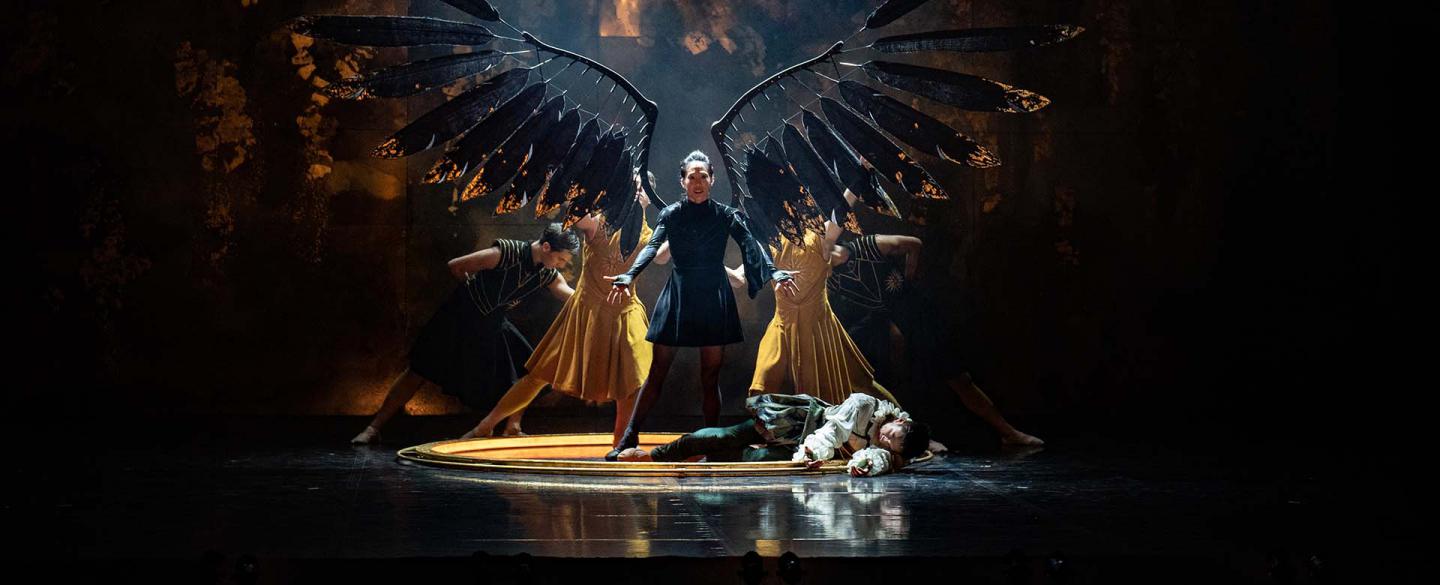

As Northern Ballet's Merlin tours the country, we explore how legendary sorceresses like Morgan le Fae have cast their spell on centuries of storytelling about female power and rebellion.
When Morgan le Fae takes the stage in Northern Ballet's Merlin, audiences witness more than breath-taking dance – they're seeing thousands of years of female power made manifest. Morgan embodies the ultimate ‘dangerous woman’: intelligent, independent and utterly unafraid.
The witch has always been about control – who has it, who fears it, and who gets punished for it. The Salem witch trials of 1692 targeted women who owned property, spoke their minds or simply didn't fit in.
Arthur Miller's The Crucible and the subsequent film starring Winona Ryder, brought Salem's horrors to global audiences, but the pattern was already familiar from Shakespeare's Macbeth. The weird sisters possess knowledge that powerful men lack, whilst Lady Macbeth's ambition destroys her in a world that can't tolerate female ruthlessness.
From Bewitched's Samantha trying to be the perfect housewife whilst hiding her magical powers to Hocus Pocus's Sanderson sisters causing chaos in modern Salem, popular culture has long used witches to explore female power and its consequences.
The Wicked Witch of the West started as pure evil – green skin, cackling laugh, terrifying Dorothy. But look what happened when Wicked flipped the script. Suddenly Elphaba became the hero: misunderstood, fighting injustice, standing up to corrupt power. Defying Gravity became an anthem for anyone who's ever been called difficult for doing what's right.
The same transformation happened across popular culture. Sabrina Spellman evolved from a sweet sitcom about a teenage witch to Netflix's fierce activist fighting patriarchal forces. The Witcher's Yennefer refuses to be grateful for male approval. Even Disney's Maleficent got a sympathetic backstory in the live action film version starring Angelina Jolie – turns out she had good reasons for her rage.
Today's witches aren't hiding in forests – they're on Instagram, in feminist bookshops and leading climate protests. The witch has become shorthand for any woman who's been called ‘too much’: too smart (Sabrina), too ambitious (Lady Macbeth), too angry (Elphaba), too dominant (Morgan le Fae).
Modern witchcraft celebrates exactly what society once punished: female intuition, ancient wisdom, connection to nature, and the refusal to make yourself smaller for anyone's comfort.
In Northern Ballet's Merlin, Morgan le Fae embodies all of this complexity. She's a fierce military leader commanding the King’s army, a woman so determined to claim love and power that she'll steal magic itself to get what she wants. This isn't your gentle wise woman stereotype – this is ambition incarnate, refusing to wait for what she desires.
When Morgan dances, she channels every witch who came before – from the Salem victims to Shakespeare's weird sisters, from the Wicked Witch to Sabrina casting spells for justice. Her pursuit of Merlin's powers mirrors every woman who's ever been told magical thinking won't get her what she wants, then gone ahead and tried anyway.
Ballet itself mirrors the witch's journey. The strength required, the seeming defiance of gravity, the transformation from earthbound to transcendent – it's all there in Morgan's movement. She's every woman who's been told she's too powerful, too ambitious, too dangerous and decided that's exactly who she wants to be.
The witch's story isn't over. As long as there are women refusing to be contained, she'll keep evolving, inspiring and enchanting audiences worldwide. In Merlin, that timeless power takes flight once again.
Photos from Merlin taken by Emma Kauldhar featuring Sarah Chun as Morgan.